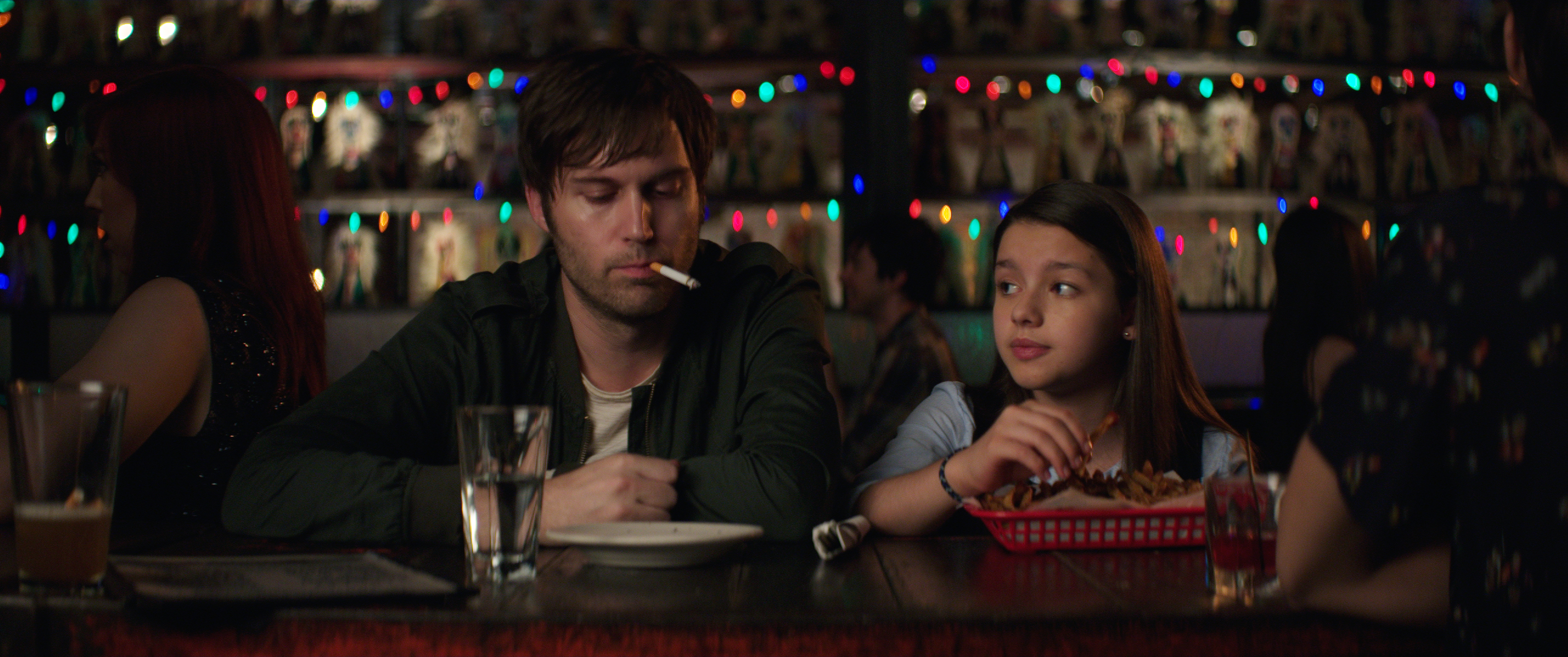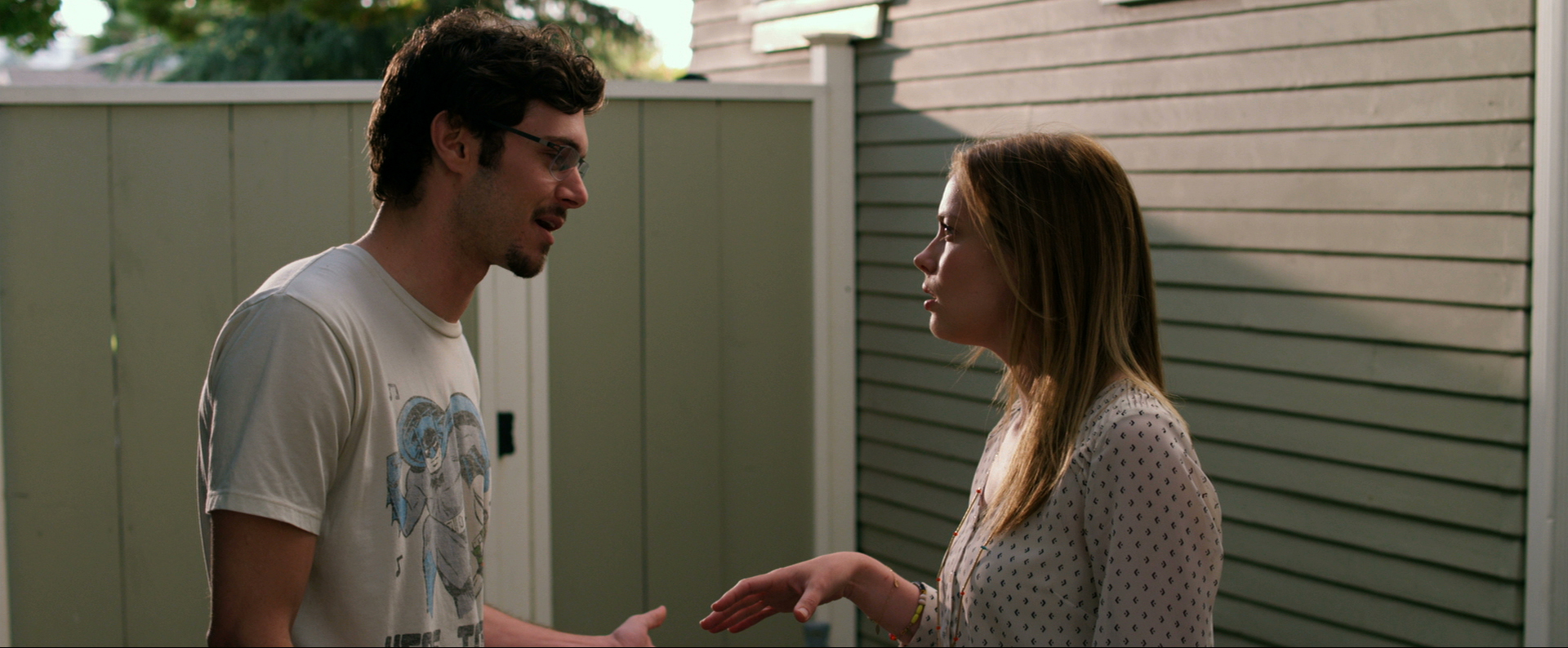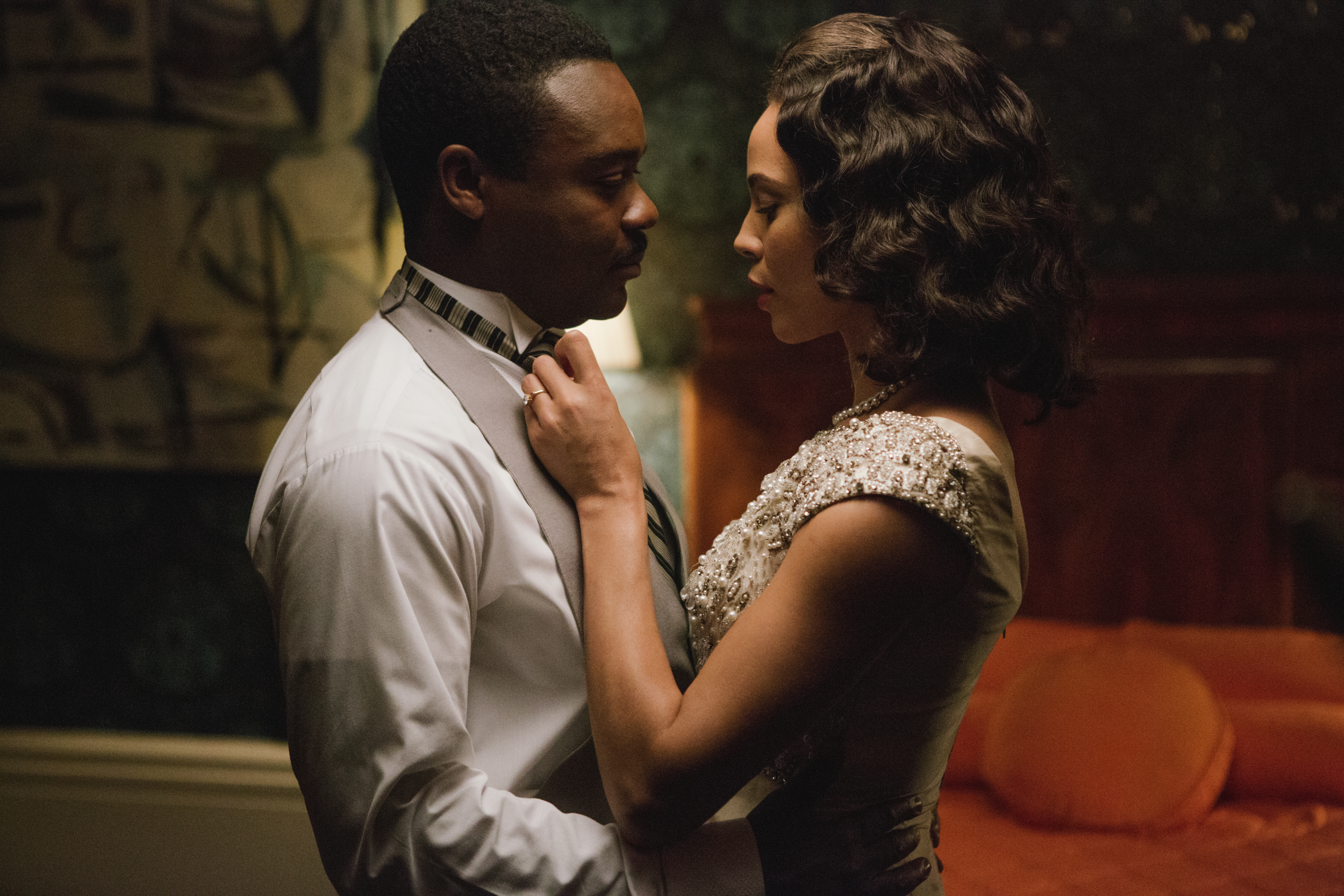Opening ThisWeek
Before I Disappear
Opens Fri., Jan. 9 at Sundance Cinemas. Not rated. 93 minutes.
A cliche, once struck, can never be unrung. Expanding his Oscar-winning 2012 short Curfew, Shawn Christensen again plays Richie, interrupted from his suicide bath by an unexpected phone call. It’s his single-parent sister Maggie (Emmy Rossum, recently seen in Comet), from whom he’s been estranged for years. She needs an emergency babysitter—the reason to be divulged later—for her precocious 11-year-old daughter Sophia (Fatima Ptacek, the current voice of Dora the Explorer, reprising her role from the short film). Should he stay or should he go? This random, life-affirming decision determines the next 24 hours in a New York demimonde, no matter how many madcap misadventures the script tosses in the way.
In flashbacks and a few fantasy sequences, we gather how petulant Richie is a not-quite-recovering addict with a wavering death wish. He’s caught in a beef between two thuggish club owners (Ron Perlman and Paul Wesley) about a dead girl, victim of a heroin OD, whose corpse he inconveniently discovered. Meanwhile bossy little Sophia is demanding dinner, quiet time to study, and the responsible uncle behavior that Richie is entirely unprepared to provide. Yet provide it he must, and will, because he answered that fateful phone call—no matter the blood dripping from his hastily bandaged wrists.
Whatever the plot implausibilities here, chemistry is what matters between Richie and Sophia. They have it in quieter moments, as when the two lay low in a bowling alley—then along comes some new histrionic scene or baroque filmmaking flourish to spoil the charm. In padding his tale, Christensen provides ample scenery for the chewing by Perlman and Wesley (the latter doing his best Ray Liotta impersonation); and he’s no less indulgent in making Richie the sort of verbose martyr to whom we’d gladly lend sharper razor blades and a vascular anatomy book. Rossum doesn’t fare much better with Maggie, written as a volatile, self-destructive yuppie because—well, because Richie somehow needs to prove himself a responsible brother and uncle.
Sophie’s never truly endangered during Richie’s generally comic errands; she’s protected as much by sentiment as screenwriting convention (Don’t Harm the Child). Moreover, Christensen can’t settle on a satisfactory tone—mawkish one moment, menacing the next, then everyone jumps into a choreographed dance number at the bowling alley. His movie is so vehement about Richie’s redemption that even its bumpy detours are dully predictable. Brian Miller
A Girl Walks Home Alone at Night
Runs Fri., Jan. 9–Thurs., Jan. 15 at SIFF Film Center. Not rated. 99 minutes.
It sounds like something that fell from a branch of the Tarantino tree: Surely a movie promoting itself as an Iranian vampire/spaghetti-Western indie featuring a skateboarding undead heroine must be doing its thing with tongue firmly in cheek. But hang on, because A Girl Walks Home is not too interested in genre spoofery. This debut feature by Ana Lily Amirpour (who grew up in Bakersfield of Iranian ancestry) is a very studied mood piece, dryly humorous and more inclined toward the arthouse than the drive-in. There will be blood—and it will be sucked—but Amirpour has more on her mind than horror.
It’s an American film, but it’s set in Iran and the dialogue is in Farsi. The cast includes many Iranian expatriates—or actors who, like Palo Alto–born leading lady Sheila Vand, grew up speaking Farsi in their American homes. Vand plays our unnamed heroine, a young woman who walks (and yes, sometimes skateboards) down the streets of Bad City at night. Clad in her chador, drenched in the movie’s black-and-white gloom, she has a great vampire vibe. The opening reel, in which she is picked up by a creepy pimp who doesn’t suspect the supernatural possibilities at play here, is an instant classic—atmospheric, menacing, odd. While this girl walks alone at night, her soulmate also moves through the nocturnal city. He is Arash (Arash Marandi), whose vintage T-bird has been claimed by a local gangster—yet even without wheels, he’s still cool. When he dresses as Count Dracula for a costume party and runs into the vampire there, their union is written in blood.
Amirpour, an experienced hand at short films, is content to let the movie float along on its gorgeous monochrome look and punk attitude. She seems to have taken the attitude that if vampires have nothing but time, why shouldn’t scenes just keep going on and on? Even though Girl feels like it could benefit from losing 20 minutes or so, you might miss the languid, going-nowhere pace if things were hurried. It goes without saying that Amirpour has turned the film into a graphic novel, which sounds like a good home for this kind of unhurried, arty, super-stylish project. Robert Horton
PInherent Vice
Opens Fri., Jan. 9 at Guild 45th, Meridian, and Thornton Place. Rated R. 148 minutes.
Paul Thomas Anderson was born in 1970, the year in which Thomas Pynchon’s shambling detective story is set. An auspicious coincidence, right? Yet Pynchon’s jokey novel, tenderly but not reverentially adapted here, is actually quite late in his canon. The famously cryptic and reclusive author hit his peak of boomer renown in the ’60s and early ’70s—after leaving a Boeing technical-writing gig in Seattle—with his totemic trifecta: V., The Crying of Lot 49, and Gravity’s Rainbow. Despite being immersed in the counterculture of that period, Inherent Vice came out in 2009, by which time Anderson was the era’s auteur. Why Pynchon would go back to 1970 is obvious: nostalgia, command of period color, and unfinished business as one optimistic decade curdles into another—trying to locate Where It All Went Wrong. But what mysteries are there for Anderson to plumb?
That undefined mission is also Doc Sportello’s. He’s a mutton-chopped hippie gumshoe operating near the beach, salt air and cannabis fumes constantly in his lungs, vaguely pursuing a missing-person case in which the real-estate developer in question (Eric Roberts, as it turns out) may not be missing at all. Doc is played with wonderful head-scratching panache by Joaquin Phoenix. He’s a P.I. who collects very little hard evidence; yet he persists, unperturbed by the absence of such facts. If it’s his ex-girlfriend, or “old lady,” Shasta (Katherine Waterston), who’s turned him onto the case, if the missing party is her new man, Doc appears unruffled by jealousy. Yet he’s not an easily abiding Dude-esque figure (he actually kills two guys), and Inherent Vice isn’t so comic as The Big Lebowski. Doc’s on a serious quest for answers. The problem is that he isn’t proceeding from a clear set of questions. Confusion is his modus operandi, the Ouija board his compass.
To help us track a labyrinthine mystery that he has little interest in resolving, Anderson provides a narrator (musician Joanna Newsom, also appearing as Doc’s pal Sortilege). The elusive Shasta makes a few tantalizing appearances, and Doc meanwhile stumbles through a gallery of SoCal eccentrics. (These include Martin Short, Owen Wilson, and Benicio Del Toro.) The squares of Nixon’s silent majority are represented by Martin Donovan (as a string-pulling tycoon), Reese Witherspoon (a D.A. and Doc’s new squeeze), and Josh Brolin as Bigfoot Bjornsen: police detective, part-time actor, and Doc’s possible doppelganger. With his brutal growl, flattop, and casually administered beatings, Bigfoot would seem to embody the fascism of the Dragnet-era LAPD, yet his duality makes him the film’s strangest and strongest character. Doc is recessive and basically decent. The heroin dealers or dentists’ cabal or sanatorium scammers who constitute the Golden Fang (the movie’s MacGuffin, possibly a conspiracy, possibly a paranoid stoner misunderstanding)—well, that’s the evil Doc is confronting, even if he can’t quite put his finger on it. But Bigfoot has feet in both realms as they shift like tectonic plates. His dilemma is Pynchon’s: rejection of the old order, distrust of the new.
In Anderson’s loosest, most purely enjoyable film to date, the indigestible apricot pit of The Master is blissfully washed away. Plot matters less than the telling and serendipitous details of the tale: Doc curling up in a ball to avoid yet another beating from Bigfoot; cheesy TV spots for Channel View Estates (a hideous resource grab of Chinatown proportions); Short’s coked-up dentist unzipping between trysts; Bigfoot digitally inserted into an old episode of Adam-12 (and speaking angry, fluent Japanese at a diner); and a visit to the world’s surliest brothel—located, of course, at Channel View Estates, where the prostitution of land and flesh coincide.
Like Stanley Kubrick, only with a compassionate sense of humor, Pynchon warned us in the ’60s about the creeping tyranny of the system—“the ancient forces of greed and fear”—over the individual. And in the deliriously enjoyable Inherent Vice, Anderson finally grants us a consoling bulwark against that toxic tide. If “American life was something to escape” (again says the narrator), instead of heroin or real estate, at least we have each other: Doc and Bigfoot, Shasta and Doc, the Golden Fang be damned. Brian Miller
Life Partners
Opens Fri., Jan. 9 at Seven Gables. Rated R. 93 minutes.
Whatever else it achieves in offering observations about friendship and love in the modern age, Life Partners is definitive on one subject: the tyranny of the smartphone. The devices intrude on almost every scene—not as a way of making a point about our wired existence, but just as a part of everyday life. (One subplot involves texting while driving, and the minor fender-bender that results.) The characters are accustomed to having every conversation, flirtation, or seduction punctuated by the buzzing WHAAH of a phone vibrating its latest demand. No wonder they can’t concentrate long enough to straighten out their lives.
At the heart of the film is the longtime friendship between Sasha (Leighton Meester) and Paige (Gillian Jacobs), 29-year-olds who like to drink wine, stage mock public arguments, and provide live running commentary for reality-TV shows. Sasha is lesbian and Paige is straight, but this doesn’t have too much to do with the story’s main turn: Paige meets a boyish Mr. Right (Adam Brody), and the old friends must delicately renegotiate their time together. Director Susanna Fogel works hard to make them specific people, not types: Paige is control-oriented and condescending, while Sasha keeps dating young airheads. There’s also a nice wrinkle in what seems to be a cliche about Sasha, who works at a meaningless job but has a true calling as a singer/songwriter : namely, what if—in opposition to most chase-your-dream movie scenarios—the true calling isn’t actually all that compelling anymore?
These are valid storytelling beats, and Life Partners draws energetic turns from its engaging leads, all of whom came from television (Meester became a star on Gossip Girl, Jacobs was a regular on Community). As veterans of same-sex dating battles, Gabourey Sidibe and Beth Dover provide some laughs. But for all the nice effort, I didn’t really believe Life Partners. From scene to scene, everybody tries too hard to convince us how informal and funny it all is. Meester and Jacobs unleash brassy zingers like nobody’s business, but they don’t convey the laid-back, lived-in rapport of old friends who know what the other person is going to say before she says it. Of course, when the world is keyed to the rhythm of the smartphone, no wonder everybody seems jumpy. Robert Horton
PMy Last Year With the Nuns
Runs Fri., Jan. 9–Thurs., Jan. 15 at Northwest Film Forum. Not rated. 75 minutes.
Seen during SIFF last spring, this adaptation of Matt Smith’s 1997 stage monologue has three irresistible selling points if you’re a) Catholic, b) were raised on East Capitol Hill during the 1960s, and c) have an aversion to warm and easy nostalgia. Directed by Bret Fetzer (who also staged the original monologue), Nuns doesn’t cover a lot of ground, but it also doesn’t need to. It’s a condensed, somewhat fictionalized account of what it meant to be a teenage troublemaker during 1966–67, when Smith and his buddies were in the eighth grade at St. Joseph’s.
Smith is unsparing—and often hilarious—about his clannish, insular, and bigoted parish, populated by large families whose kids were just beginning to sense the liberal breeze of the late ’60s. Seattle was then a thoroughly Republican and conservative town, segregated by class, faith, and race. Open-housing laws didn’t yet exist, and Smith—variously playing his younger self, peers, and elders—is frank about how the Madison Valley was then called Coon Hollow, a term none even thought to question.
The anecdotes and adventures Smith relates aren’t terribly novel (stealing from the collection plate, etc.); but again, they don’t need to be. Their snotty, profane details transport us—meaning Seattle natives; Amazon newcomers won’t care—back to our city’s preliberal roots. Seattle is then seen through the parochial perspective of a lad Smith has subsequently called “a 13-year-old white Catholic boy who is cluelessly racist, homophobic, and misogynistic, and is only now just barely beginning to confront the horror of his thinking.”
Although it didn’t occur to me last year, when I interviewed Smith and Fetzer before SIFF, Nuns deserves comparison to the ’60s coming-of-age-on-Mercer Island memoir Cheese Deluxe by the late Greg Palmer, who shares Smith’s wry observational tone. Too much of Seattle’s history has been written in pious, pooh-poohing tones of disapproval: Oh, we’re so much better than that now. Smith doesn’t have any such pretentions or delusions. We’re no better now, but we better understand the past by describing it truthfully (salted with a little art and embellishment). This is regional filmmaking at its most amusing and specific. Note: Smith and Fetzer will appear at selected screenings, as will producer Michael Seiwerath and cinematographer Ben Kasulke. Brian Miller
Selma
Opens Thurs., Jan. 8 at SIFF Cinema Uptown. Expands Fri. at ark Lodge, Majestic Bay, and other theaters. Rated PG-13. 127 minutes.
The most suspenseful scene in Ava DuVernay’s Selma does not depict the dramatic 1965 march from Selma to Montgomery, nor an Oval Office facedown between Martin Luther King, Jr., and President Lyndon Johnson. No, the real cliffhanger happens during a twilight domestic scene between King (David Oyelowo) and his wife Coretta (Carmen Ejogo). The husband’s alleged extramarital affairs are the immediate concern, and at this crucial moment in the civil-rights struggle, two married people must acknowledge a few intimate truths. The storytelling takes a pause, the gifted actors operate on a slow simmer, and Selma conveys a tingly sense of the way the march of history turns on human give-and-take in humble rooms.
If all of Selma had that personal electricity, it might be a fresher movie. A lot of it is that good, and a lot of it is dutiful lesson-telling. But even when it feels like civics class, Selma benefits from its timing: Coming at the tail-end of 2014, a truly rotten year for race in America, the film’s depictions of protest marches and boiled-over tensions can’t help but create ripples of excitement in a movie theater. DuVernay keeps her focus on the events surrounding the march, when the horrifying violence of Alabama law enforcement against black protesters—televised in a newly immediate way—helped turn public opinion toward the idea of the Voting Rights Act of 1965. It’s a stirring true story, and DuVernay deserves credit for including the layers of strategy and compromise that happened behind the headlines.
This very American story has a curiously Brit-dominated cast, including Oyelowo and Ejogo. The casting is not a huge issue, although anybody with direct memories of the larger-than-life presences of LBJ and Alabama governor George Wallace can be forgiven for finding Tom Wilkinson and Tim Roth (respectively) insufficiently vulgar in the roles. Cameos by the likes of Oprah Winfrey (as a victim of the ludicrously unfair methods of keeping African-Americans away from the voting booth) and Cuba Gooding, Jr., carry an unfortunate TV-movie guest-star air about them, although one understands the value of getting marquee players in a relatively low-budget project. For all the wobbles, when the film reaches its climax, the sheer force of history bends toward its fascinating mid-’60s moment. The feeling that the victories of 1965 can be viewed through our 2015 eyes as unfulfilled promises gives Selma its present-day juice. Robert Horton
E
film@seattleweekly.com







